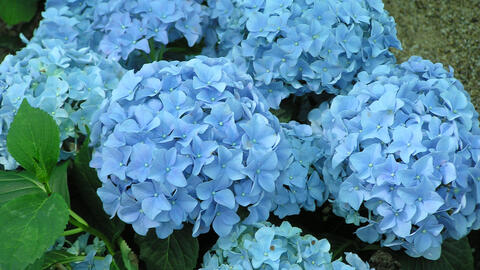How to fertilize Hydrangeas
Hydrangeas only tolerate low levels of lime and have similarly high nutritional requirements as Rhododendrons. These fertilizing tips will see your plants flourish.

Bigleaf Hydrangeas (Hydrangea macrophylla), such as the ‘Endless Summer’ variety, flower from July until well into the fall. Similar to modern Roses, new flowering shoots form after pruning
Hydrangeas, like Rhododendrons, are plants that need acidic soil. However, they are not quite as sensitive as Rhododendrons and can tolerate low levels of lime. They also cope with loamy soils better than the heather family. Your Hydrangeas will nonetheless provide you with long-term enjoyment if you can offer them good, humus-rich, evenly moist garden soil.
When it comes to fertilizer, Hydrangea experts swear by matured cow manure. Unlike most other types of manure, it is naturally acidic and therefore does not increase the pH of the soil. Another advantage of this natural fertilizer is that it enriches the soil with valuable humus. However, it is not particularly easy to get hold of good cow manure in cities. Even in rural areas, you rarely see the traditional piles of manure behind cow barns: more and more cows are kept on slatted flooring, where the cow dung does not get mixed with straw, but rather ends up in collection tanks as liquid manure. Therefore, a good, but more expensive, alternative is to purchase dried cow manure pellets from garden centers.
For well-established plants, sprinkle the fertilizer onto the soil below the plants and in a circle below the outer third of the crown, according to the dosage recommendations. Most of the fine roots, which allow the plant to absorb nutrients, are found here. To releases its nutrients, the cow manure first needs to be decomposed by microorganisms, so it is best to work it into the soil or to cover it with a thin layer of leaves. Savvy gardeners apply the manure in fall – this way, it is partially decomposed by spring and the nutrients are available to the plants when new growth starts to emerge. But it’s also fine to use it in spring.
If you can’t get your hands on cow manure, you should simply feed your Hydrangeas commercial Hydrangea fertilizer as it is formulated to meet the nutritional needs of the plant. It’s best to also use an organic product as it enriches the soil with humus. Some mineral Hydrangea fertilizers also contain alum – an aluminum salt that can turn Hydrangea flowers blue. However, this only works with certain pink varieties of Bigleaf Hydrangea – they are the only varieties able to change the color of their flowers based on the soil reaction.
You should stop fertilizing Hydrangeas at the end of July: high levels of nitrogen make the shrubs less hardy, as the shoots do not lignify adequately. You should not fertilize Hydrangeas that have been freshly planted in spring during the first season: the shrubs take root better if they have to actively search for nutrients and are not ‘spoiled’ straight away. A widely branched, well-developed root system also provides the moisture-loving shrubs with the best protection against drought damage.

Hydrangeas in pots have limited space for their roots to develop and therefore need a continuous supply of nutrients. A special liquid fertilizer for Hydrangeas is ideal in this case. Here too, there are products, containing alum, which maintain or encourage blue flowers. Rhododendron or Camellia fertilizers are good alternatives, as these plant genera have similar requirements.
If you want to protect your Hydrangeas from frost and overwinter them indoors, you can fertilize them well into fall. However, if the plants are remaining on the patio with winter protection, you should stop watering them by August. Incidentally: these nutrient-demanding plants also tolerate homemade natural fertilizers very well, for example nettle manure thinned with water at a ratio of 1:5 to 1:10.


